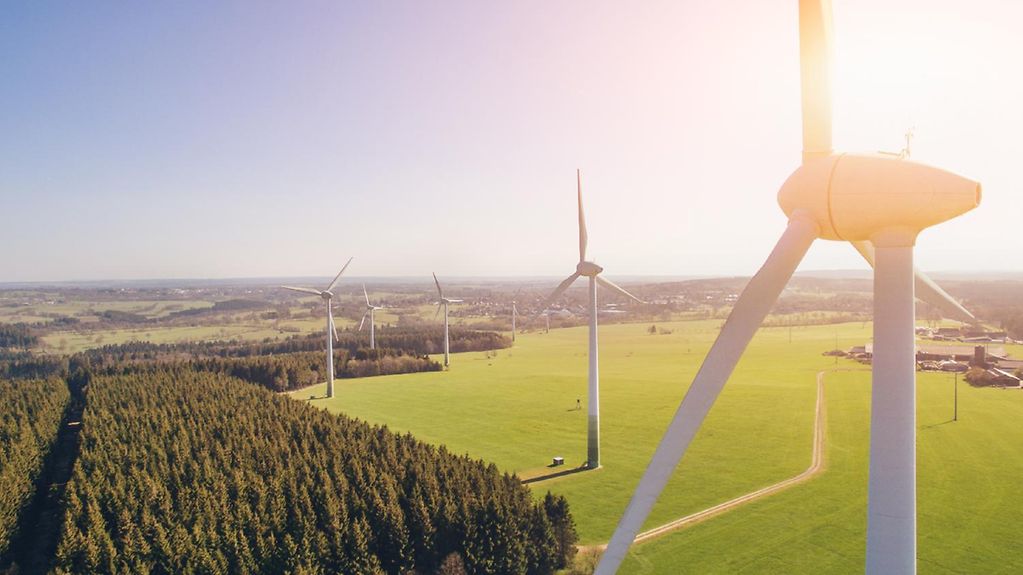Restrictions for wind turbines
The lights fitted to wind turbines are only to flash at night when necessary to prevent a collision with aeroplanes, i.e. only when an aircraft is actually approaching. The new provision is laid out in the general administrative regulation adopted by the Cabinet.
1 min reading time

In future flashing warning lights on wind turbines will only go on when a flying object approaches, to minimize any adverse impact on the population and the environment
Photo: Getty Images/EyeEm
The government hopes that restrictions on flashing warning lights on wind turbines will raise acceptance among the population for further extension of the use of wind energy and minimise impacts on the environment. One main part of the general administrative regulation is a revision of the technical specifications pertaining to the legally required signals during the night hours.
More affordable transponder technology
Currently, radar-based systems that locate aircraft and use signals to switch on the lights on the turbines are permitted. Now the German government intends to permit another technical solution, which would see aircraft use transponder signals, which would be received by wind turbines and activate light signals during the night hours.
The new general administrative regulation also implements new standards and recommendations of the International Civil Aviation Organisation (ICAO) regarding the marking of wind turbines, as well as significantly increasing the generally permissible length of rotor blades.
"Needs-driven" mandatory night marking
The 2018 Energy Collection Act (Energiesammelgesetz) made it mandatory to fit wind turbines with "needs-driven night marking" to raise acceptance for wind energy.
Needs-driven night marking provides for red warning lights on the wind turbines to go on only when an aircraft is actually approaching at a hazardous altitude. This should significantly reduce the time when the warning lights are actually flashing.
According to the Federal Ministry of Economic Affairs some 29,000 wind turbines are currently operating on shore (as at the end of 2018). About 17,000 of them are higher than 100m and must thus be marked.